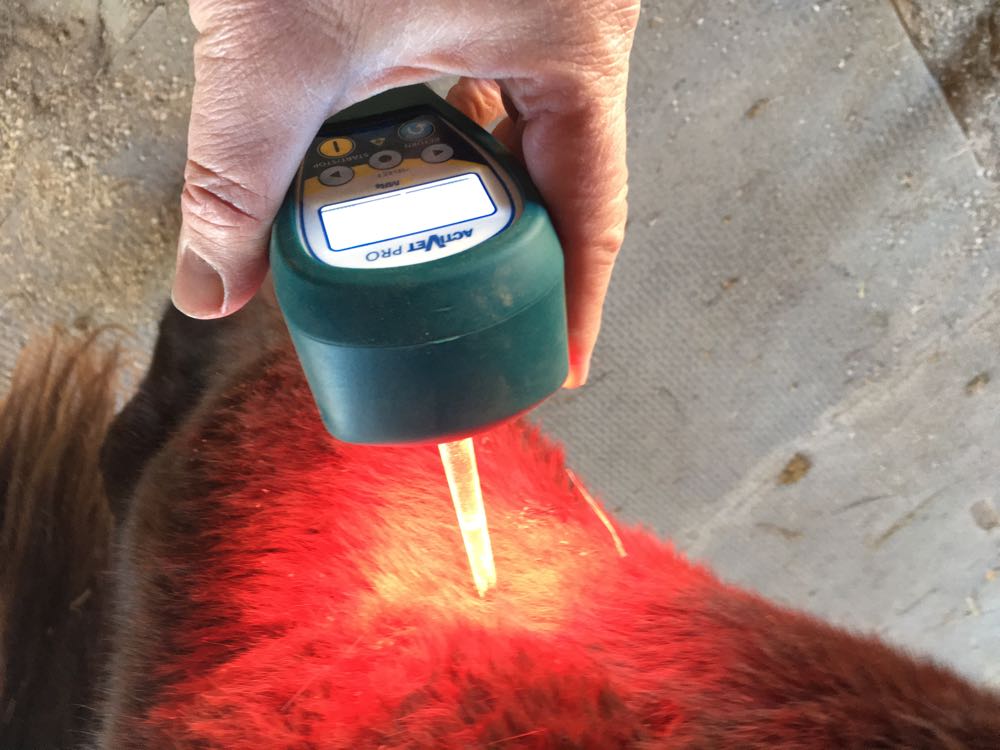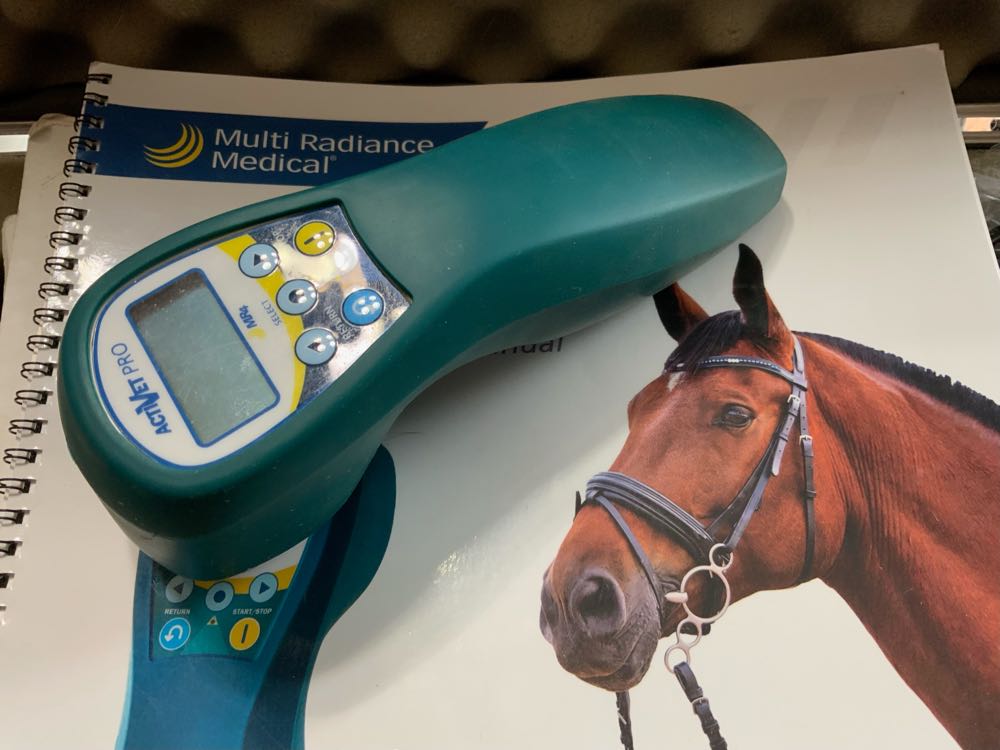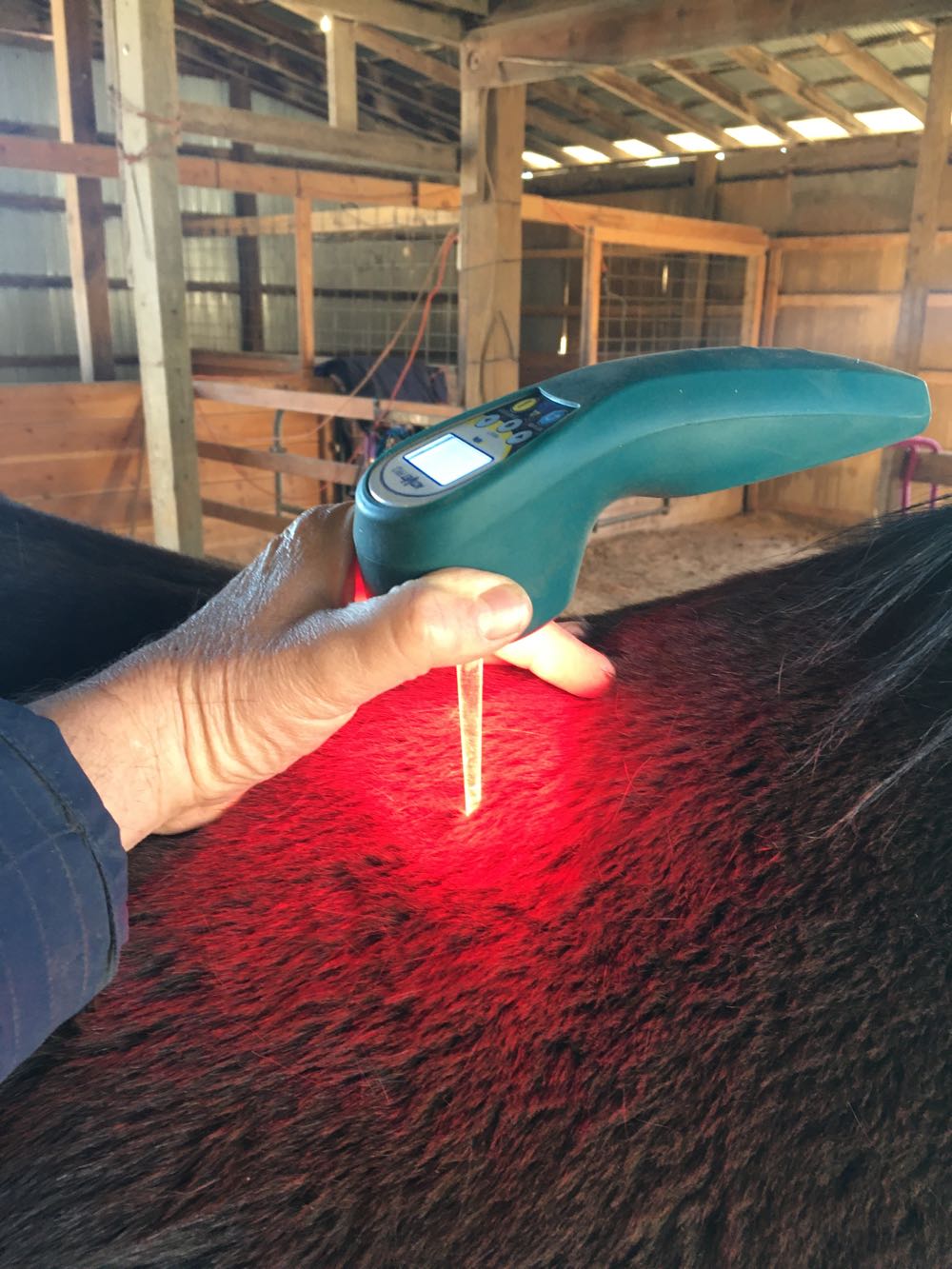Lasers (Light Amplification by Stimulated Emission of Radiation) have been around since the 1950’s. They are used routinely in daily life if you have ever bought anything at a store. The technology capability of lasers occurred with the understanding of quantum physics. We have been using them as a treatment modality in medicine for around 40 years.
Lasers can be used for a couple of treatment options. One type of laser is used for surgeries. Another type of laser is used for medical treatment of the body. The medical treatment lasers are broken into classifications, Class 1 – 4. The Class 4 lasers traditionally had the deeper penetration into the tissue but could literally burn the internal tissues if held in one place. The Class 1 laser commonly known as the red light laser has a shallow penetration. The red light laser is named after the wavelength of light produced since lasers generally emit a red light. These type of lasers can be sold to the public since misuse of the laser does not cause tissue damage. The Class 4 lasers cannot be sold to the public due to the potential of tissue damage with misuse.
The mechanism of action for a laser is to introduce energy into the body in the form of light. Light has both a wavelength and a photon phase. The wavelength is the oscillating structure as it rises and falls just like a wave of water. The photon is a package of energy. The photon penetrates into the tissue and causes numerous reactions to occur. The photon energy has a direct photochemical change that initiates the natural healing process. One aspect is the photon causes the mitochondria, the powerhouse of the cell to produce ATP which is the cells energy source. Also other signal molecules are released to improve cellular proliferation and motility. Nitrous Oxide a potent vasodilator and cellular messenger is produced. These substances and others inhibit the inflammatory process, reduce pain initiating factors and response, while promoting healing of the tissue.
The photon energy of the laser is effective as an acupuncture point treatment modality. With the correct laser all acupuncture points typically treated with needles are affected by the laser. Another benefit of the laser is horses who would react to the insertion of needle do not mind the laser being placed on the skin. In essence the laser allows for more horses to be treated with the acupuncture modality.

Multi Radiance Medical developed a laser that has multiple wavelengths of light emitted. The Super Pulsed Laser has 4 synergistic light radiances to produce a patented “Cascade Effect” The “Cascade Effect” optimizes both the depth of penetration by targeting different tissues and the absorption of the photon energy at deeper target depths. The synchronizing of the 4 wave lengths GaAs 905nm, IREDs 860nm, LEDs 660nm & 465nm creates the “Cascade Effect”, saturates the tissue levels with light form each wavelength and penetrates deeper. The super pulsating has very large bursts, 25 watts of light energy for only a 100 nanoseconds therefore not risking heat damage to the tissue.

Along with the synergistic light radiance, a static magnetic field is applied which assists in keeping photo-activated molecules in a dissociated or scattered state. The static magnetic field enhances the photo-active molecules potential activity and energy level on the molecular and cellular level.
Laser light energy exert powerful stimulating influences on the blood circulation, cellular membrane metabolism and permeability along with nerve function. The bandwidth is shifted from plus to minus 100nm reducing the target cell’s ability to biologic adapt and loose the effectiveness of the photon light energy. The red light component only penetrates 1 – 2 cm but has therapeutic effects on the inflammatory process, pain reduction and microcirculation. While it saturates the superficial tissue layers, the red light enhances the depth of penetration of the other wavelengths. As an additional benefit the blue light has an antibacterial effect along with treatments for inflammatory skin conditions.
Although the type of laser light energy is important in the use of laser to treat different disease processes, the method in which the laser is used has significance. One of the methods is called an “Unwind Method”. By slowly moving from the base of the skull to the base of the tail at the rate of about 1 cm/second with a contact-scanning technique, an acclimating and relax response will occur. The “Ohshiro’s Method” is used for lymphatic system treatments. Treatment with the laser should start at proximal or near the center of lymphatic system. The treatment points work distally towards the injured or swollen area. This method opens up the lymph vessels and encourages lymph drainage away from the distal areas.
“Pontinen’s Method” is used to treat trigger points and muscle spasms. The trigger points are given a measured and repeated inhibitory dose. The texture of the muscle and elicited palpation pain response should be dampened or resolved with one or repeated treatments of the area. “Photohemotherapy Method” also known as transcutaneous laser therapy blood irradiation improves the general circulation of blood and microcirculation activation. It increases red blood cell production consequently improving the assimilation of oxygen by the tissue cells. An anti-inflammatory decongestant and pain killing action is observe which facilitates healing.
In conjunction with the above methods, different techniques can be added to enhance the treatment response. Most common used technique is the “contact technique”. The laser is held in direct, firm contact with the skin, using a probe will enhance hair separation and skin contact. It has the best penetration and consistent dose administration. It is particular useful when treating painful joints, trigger points or acupuncture points. Laser photon energy delivered is 3 – 10x greater than the next technique I will describe. This technique is call “Non-contact technique”. Less used than “Contact technique”, “Non-contact technique is performed by holding the laser unit 1-2cms above the treatment area. Advantages exist for this technique were 30% less energy is delivered to the treatment area. “Non-contact technique” is advantageous for treatments of wounds or animals in frail health or when direct pressure is not desirable.
Another technique we use is a “scanning technique”, when large areas need to be treated. It can be done in contact or non-contact fashion but the treatment dose is spread over a larger area so the treatment time should be increased. This technique is ideal for non-localized pain. The final technique we will discuss is the “Woodpecker technique”. A light, rhythmic pattern of compression is applied to lymphatic locations in the extremities. This technique encourages lymphatic drainage and helps eliminate gross edema from an extremity. This technique is used in conjunction with the “Ohshiro’s method.”
Treatment of trauma or injury is a two stage process. Initially treatment should be centered on reducing inflammation, swelling and the pain cycle. Once the inflammation cycle has been corrected then the healing or tissue repair and function of the tissue should be addressed.
So with trauma or injury, the cascade of inflammatory events initiates swelling or edema which causes the blood and lymph vessels to constrict which produces a pain response. By using the Ohshiro’s method with the woodpecker technique the laser promotes dissipation of the edema. To promote healing the inflammatory process needs to be controlled, the laser will reduce the inflammatory process and products. If a wound is present form the trauma, the blue light on the laser can reduce the bacterial population.
Another response to trauma or injury is muscle spasms. It is a protective mechanism to stabilize the area but can produce a great deal of pain. These points are trigger points or areas of pain found on palpating the muscle. Laser can be used to effectively treat these muscle spasm points breaking the cycle of pain. Also reducing or eliminating the pain response created by the trauma or injury will enhance the healing process. The pain should be addressed in a local manner and a whole horse manner. The whole horse manner can be obtained by using the “Unwind Method” previously described. Treatment can be done around nerve roots and trunks at the spinal level and of acupuncture points. Also local treatment at the injury site can be done initially to reduce the pain response. Local treatment should be done sparingly in the initial stage since it will inhibit the healing process by delaying resolution of the inflammatory stage.
After inflammation and pain is resolved, the tissue repair and strengthening process can begin. Local treatment with light energy from the laser increases the production of ATP which is the energy of the cell. The cells of bone, muscles, tendons, and ligaments are stimulated to repair due to the increase energy. As a more systemic treatment the laser is placed over a proximal artery that feeds the site of injury. This treatment will cause dissociation of Nitrous Oxide a powerful vasodilator and pain mediator. With more vasodilation the supply of nutrients and healing factors will increase.

Reducing the muscle spasms as mentioned before will also promote healing. When the muscle is relaxed and not adding strain to the damaged tissue healing can advance. Using the laser to treat the trigger or Ahshii points is an acupuncture method. The Ahshii points around the damaged joint or in the muscles are indication of impeded Qi flow through the area. The laser can be used to treat these acupuncture points, promote Qi flow and healing. Also on the same ideology, treatment of sore muscles after the return to work is a benefit of the laser. Pain in the sore muscles can be lessened by reducing the oxidative stress of exercise with improved oxygen delivery and shortening the recovery period.
In conclusion technology used daily at almost any store when used in a medical device can be an effective treatment modality for your horse. The photon energy produced by the Multi Radiance Medical laser is able to safely penetrate deeper into the horse’s tissue. The photon energy has many cellular effects including increasing microcirculation, potentiating physical and biochemical processes by activating biomolecules and ATP production along with the production of Nitrous Oxide. The laser has multiple methods and techniques to treat your horse’s inflammation resulting from injury and promote healing of the disease process. We can use the laser as an acupuncture modality for prevention and treatment of your horse’s diseases. If you would like your horse to experience the benefit of laser and all the treatment modalities offered by Dr Wagner, give us a call or use the contact page on the website.
